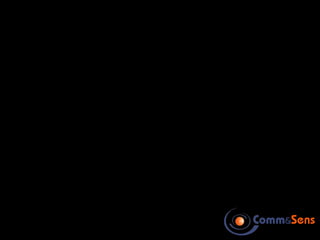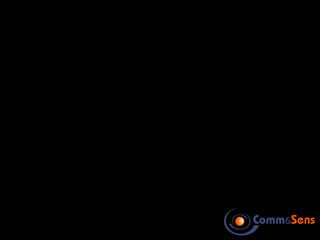Path correlation
- 1. Path Correlation through Penetration to Buildings âĒ Dr. Joseph Shapira 1
- 2. Contents âĒ 1. 2. 3. 4. 5. 6. âĒ 1. 2. Propagation modes Sources of waves impinging on the outer wall Reflection and transmission through walls Transmission through apertures Propagation within a room Coupling into inner rooms Indoors-generated transmission Pathsâ correlation Correlation between impinging sources Correlation between offspring branches diffractions of each penetration mode) (reflections and âĒ 2
- 3. Propagation modes 1. 2. 3. 4. âĒ 5. 6. Impinging waves Wall penetration Aperture penetration 1 Transmission through multiple walls Propagation within the room Coupling to inner rooms 5 4 3 6 2 3
- 4. Sources of waves impinging on the outer wall 1. 2. 3. 4. Direct (LOS) 1. Remote source â plane wave. Full correlation between source antennas. 2. Near source (across the street). Full de-correlation at edges of the aperture dD âĨ ÎŧR d â source antennas spacing; D â aperture; R- distance Remote reflector â each reflector is a remote source. The distance between the reflectors â d, determines the correlation between them. Over the roof, and around-the-wall diffraction â these are line sources. Create a single ray in the plane of the line. Propagation along the street (waveguide propagation). Impinges on the wall at low grazing angle, high attenuation. Reflectors or line diffractors across the street, generate wave impinging near normal incidence and may be stronger. 4
- 5. Transmission through the wall â the angular filter Î T T Î H polarization V polarization (incidence in horizonthal plane) 5
- 6. Window penetration âĒFirst Fresnel zone s2 d= 4Îŧ âĒDiffraction zone â attenuated by âĒceiling and furniture clutter W Wi = exp{ â Îąd } âĒTransition zone W = ïĢŦ A ïĢķ ïĢŽ ïĢ· Wi ïĢ Îŧd ïĢļ 2 ïĢŦ Îŧ ïĢķ ïĢŽ ïĢ· 2Ïh ïĢļ ïĢ h 2 Îŧd h> 4s holds for âĒW,Wi flux density, i incident 1st Fresnel zone Edge diffraction 6
- 7. The window penetration depth cos 2 Ï Free space penetration depth filter d ' = ( s 2 4Îŧ ) cos 2 Ï d d ' 7
- 8. Wall reflection loss Reflection loss [dB] -5.00 88 80 72 64 56 48 40 32 8 24 -3.00 16 Reflection loss [dB] 0 -1.00 V polarization TE, eps=3 TM, eps=6 -7.00 -9.00 TM, Eps=3 H polarization -11.00 TE, eps=6 TM, eps=10 TE, eps=10 -13.00 -15.00 Angle from zenit, degrees 8
- 9. Room reflections âĒ The reflection loss is not trivial âĒ Up to 10 dB per reflection. âĒ The direct ray is dominant Îļ 180âÎļ Î6 âĒ Scattering from objects near the âĒ UE (e.g person) competes with âĒ high order reflection 180+Îļ Î 4 âÎļ Î2 9
- 10. Reference to reported observations âĒ Mischa Dohler et. Al. :MiMO channel measurements, IEEE Communications Magazine âĒ March 2007 âĒ âĒ âĒ Most contributions are LOS. Then only single bounce counts. Others, and diffractions, are too small Propagation along corridor â key-hole effect. DOA is only along the corridor axis. Clustered multipath are correlated 10
- 11. Direction-of-arrival measurements A. Molisch. The BS was placed across the street against the building 11
- 12. Indoor-generated transmission âĒ Reciprocity imples dominance of direct + 1st reflection âĒ Within the same roomâ scattering rich. âĒ Through walls to other rooms â angular filter through each wall. However, multiple rays may have equal strength (due to complexity of environment, e.g. corridor propagation etc.). A range of richness dimensions. âĒ Indoors to outdoors â by reciprocity, âĒ same as out-indoors. 12
- 13. Correlation analysis âĒLOS remote source penetrates the wall/ window as a plane wave. Full correlation. âĒEdge diffraction of the window is directive. The diffraction of both edges overlap too far to meet the de-correlation conditionâĨ ÎŧR dD âĒOver-the-roof diffraction is coherent in the horizontal plane. âĒAround-the-corner diffraction is coherent in the vertical plane. âĒThe outer wall/ window does not change the correlation of the penetrating waves. However, it acts as an angular filter, limiting the range of incidence. âĒIndoor reflections are attenuated. Only direct and 1 st bounce count. The correlation of the incoming waves does not change. 13
- 14. Correlation analysis - 2 âĒ The indoor multipath is mainly of order 1 â 2 (diffraction by a close-by object may add). âĒ The degree of source depends on the number of angularly separated reflection/ scattering that hit the wall with similar strength through the wall angular filter. This may typically be 1 â 2. âĒ The MIMO degree is then Most then then rarely 1â1 1â2 2â2 higher 14
- 15. Dr Joseph Shapira Comm&Sens Ltd jshapira@netvision.net.il www.comm-and-sens.com 15








![Wall reflection loss
Reflection loss [dB]
-5.00
88
80
72
64
56
48
40
32
8
24
-3.00
16
Reflection loss [dB]
0
-1.00
V polarization
TE, eps=3
TM, eps=6
-7.00
-9.00
TM, Eps=3
H polarization
-11.00
TE, eps=6
TM, eps=10
TE, eps=10
-13.00
-15.00
Angle from zenit, degrees
8](https://image.slidesharecdn.com/pathcorrelation-131122054407-phpapp01/85/Path-correlation-8-320.jpg)






